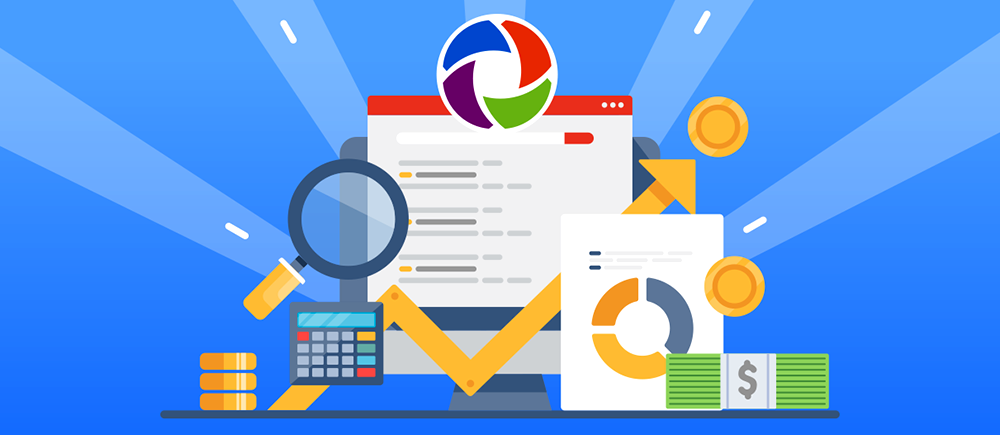Before you can purchase software services, you’ll often need to convince one or more people to approve the purchase. One way you can achieve this is by writing a budget justification. These documents can be hard to write, but they do a great job of showing both the value of the proposed software service and the thought you put into researching the best solution for your organization. I've put together some tips and examples to help you write your own!
1. Summarize the Purpose of the Document
Let's keep it real. Not everyone will hang onto every word you put in your budget justification document, so it’s important to provide an executive summary at the top, letting your leadership know the importance of the document and why they should read on.
In this article, I'll use the example of someone interested in purchasing a Chemical Inventory System. The executive summary could look something like this:
The University of Mars Environmental Health and Safety (EH&S) team is responsible for the oversight of the health and safety of over 25,000 faculty, staff, and students; environmental protection; and hazardous material management. EH&S currently uses a combination of spreadsheets and in-house developed software to manage our chemical inventory and reporting.
We suggest the University of Mars invest in technology solutions to create efficiencies that allow the team to meet the increasing demand for health and safety services while surpassing our current level of service to the campus community.
This proposal details our current challenges, areas of opportunity, cost savings, and a recommendation to proceed with a trusted and evaluated software service.
2. Identify Your Current Challenges
In this section, you have the opportunity to show others the challenges your team is up against. Writing from a first-person perspective can help put the reader in the shoes of the person who faces the daily frustration of using the current systems and processes. Be succinct but thorough in describing the challenges, and be sure to explain how each inefficiency ultimately equals wasted resources and funding.
The examples I’m using below and in the next sections are real samples of the challenges and needs voiced by our clients, before they were clients.
Example:
Managing the organization's chemical inventory is a labor-intensive process, and the hazard data we have is not accurate, putting the University at greater risk.
Our researchers and lab members are dissatisfied with the current system because they feel it is not user-friendly, and they often experience frustration and overall poor performance. As a result, some of them have reverted to using spreadsheets that are not updated in real time or they aren't managing their inventory accurately at all. Additionally, researchers have no easy way to access Safety Data Sheet (SDS) information quickly, which puts the University at risk for both chemical over-exposure and inadequate emergency response.
Because of the various methods being used to manage inventories, it takes EH&S multiple people and weeks to aggregate the inventory data, analyze, and prepare regulatory reporting. Inventory reconciliation does not occur consistently because it is manual and time consuming to perform. We know from doing lab cleanouts and audits that the data in our current inventories is less than 50% accurate. The risk for injuries, illnesses, and regulatory non-compliances resulting in the possibility of fines is significantly greater by not having an accurate inventory of materials or documentation of their hazards.
3. Discuss What You Need
This section should focus on what capabilities you need rather than a specific software solution. Simply stated, what do you need to solve your problem?
Example:
We need one system to manage all chemical inventories that includes:
- A mobile app that allows users to enter and update their inventory information in real time
- A user-friendly interface
- Access to relevant safety information and Safety Data Sheets (SDSs)
- Barcoding and Radio Frequency Identification (RFID) for quicker reconciliation
- A reporting engine with pre-developed regulatory reports as well as the ability to create ad hoc reports
Additionally, it would be nice to have a way to integrate with procurement and a way to manage control areas for Fire Code Maximum Allowable Quantities (MAQs).
4. Define the Value of Getting What You Need
Ideally, you can correlate the full-time equivalent (FTE) of time saved or dollar amounts to each of the desired capabilities you identified in section 3. Having worked on quite a few of these, I understand that a one-to-one correlation is not always possible. If you do run into that situation, do your best to explain the benefits the organization can experience.
Example:
There are many efficiencies and cost savings to be gained by switching to a centralized, automated chemical inventory system. Those efficiencies are detailed as follows:
- Having a cloud-based, centralized system will streamline the activities of our seven EH&S staff members. They will no longer have to go to separate systems multiple times a day, saving incremental time daily, which has been significant over the years.
- With an app available on a mobile device, inventory managers can add, remove, or update an inventory item by simply scanning a barcode with their phone. Adding a container takes seconds on a mobile app compared to minutes at a desk.
- With the mobile app, users leverage features that add value to their day-to-day work, including sharing chemicals across labs, encouraging them to keep an accurate inventory.
- Having an easy-to-use interface has proven to increase data accuracy.
- Mobile app access to SDS information specific to the chemicals in the lab reduces the time spent searching for how to respond to a chemical spill and reduces risk.
- The use of RFID technology significantly reduces reconciliation time. Manually reconciling inventory can take two weeks, whereas that same inventory can be reconciled using RFID technology in just a few hours.
- Regulatory reports, including CFATS, EHS, HAPS, TRI, and reporting on MAQ thresholds can take weeks to pull together. With pre-developed reports and a reporting tool, getting the data you need is reduced to minutes.
5. Present Your Proposed Recommendation (and the Cost)
Anytime you ask for something via a written proposal, it is essential to tie all the components into a final, meaningful ask. In this section, showcase the thought and groundwork that went into selecting the final solution. Demonstrate that you validated the software's functionality, spoke to real clients and users, and vetted the provider as a competent and favored vendor. It is also important to point out how the solution you propose will help you not only now but also years into the future. Software is an investment, and you need to show that there will be returns on that investment.
I have seen justifications that go into much greater detail on the actual financial cost savings. I suggest that if you have those calculations, you include them; after all, you are justifying the on-going commitment to purchase a valuable service.
Example:
With the demand for health and safety increasing, the EH&S team suggests that the University of Mars invest in the Risk and Safety Solutions Safety Platform. Upon thorough review of multiple EH&S technology solutions and discussion with other universities using RSS' Chemical Management solution, my team and I decided that the RSS solution will best meet our needs both now and as we continue to evolve and grow.
The RSS Chemical Management system meets our compliance needs, will reduce risk at our organization, and is flexible enough to meet our unique needs. It has a clean, simple interface built in collaboration with end-users. The software will allow our specialized safety professionals to focus on more impactful processes by removing manual and administrative tasks. Additionally, the system will bring business process efficiencies to the management of our chemical inventory and reporting which we had previously not considered up to this point in our journey.
Please see the attached budget sheet for the three-year total cost. The cost is $XX,XXX per year and is comparable to other vendors with similar services. This solution's cost savings are in both FTE hours (EH&S and Researchers) and the overall improved safety and compliance (equaling reduced fines). Please refer to Figure 1.0 for a breakdown of known immediate cost savings. These do not include the cost savings associated with individual fines that may result from an audit or accident or cost savings related to internal IT resources and staff.

These services are clearly an investment that will save significantly over time.
6. Review the Proposal with Your Leadership!
When you’ve finished the budget justification document, don’t just email it to your leaders expecting approval. It could easily get lost among many other end-of-year requests if you do.
Schedule time with the main approvers and send the document a few days before asking them to review it in advance of the meeting. In that meeting, briefly note the research and effort you have put into this justification. Then ask if they have questions. I suggest you quickly highlight each section in one to three sentences, focusing only on the key points: 1) What is the problem? 2) Here is how we can fix it. 3) This is the cost. 4) Here is how much time, money, etc. we will save.
It is important to end the "pitch" focused on the positives: the gained efficiencies, cost savings, increased regulatory compliance, and risk reduction. The items will resonate with decision-makers. Ask when the decision will be made, and be sure to follow up in advance of that date to see if they have any remaining questions.
Reach out if you have any questions or feedback, and good luck! dicox@udavis.edu.
Disclaimer- These are tips and tricks based on experience. I cannot guarantee you that your request will be approved by following my advice. The numbers and figures used in this article are for demonstration only. Please provide your own data on costs and savings.
Author

Diana Cox
Associate Director of Business Development and Strategy
Risk and Safety Solutions

